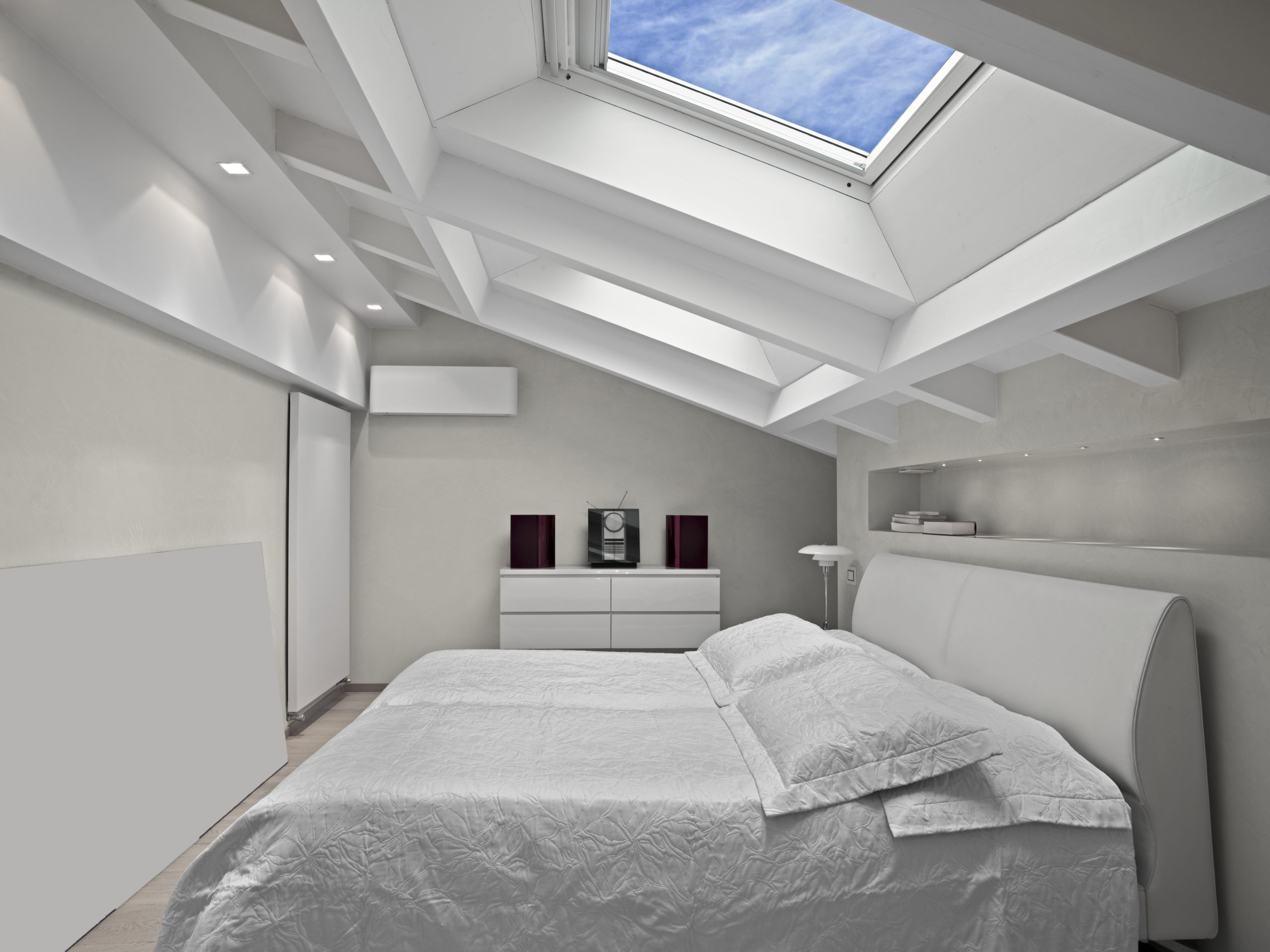The most common indicator of a problem with a skylight is the appearance of water leaks. Water leaking around your skylight could come from various sources. It is important to note that if you see water leaking around your skylight, you should contact a roofing professional immediately. Below is a list of a few things that might cause water to leak around your skylight.
- Damaged or improperly installed flashing.
- Roofing Cement.
- Improper installation.
- Blocked weep holes.
- Leaks running from other parts of the roof.
Flashing is a metal barrier that is installed on every roof penetration in your home. Besides skylights, it is installed around things such as chimneys and plumbing vents. The intended purpose of flashing is to prevent water from leaking through those roof penetrations. If flashing is not installed properly to begin with, you will likely experience leaks. Or if the flashing becomes damaged, for example during a hailstorm, you will see water leaking. Issues with flashing are the most common cause of water leaks around your skylight.
Roofing cement can be used to temporarily repair leaks around a skylight. However, if it is used during installation, it can lead to leaks. During the hot summers, roofing cement can crack, which leads to leaks. Also, if used during installation, tiny pigeonholes may develop which allow water to leak.
Installation Issues Can Cause Long-term Problems
Sometimes, leaking skylights can be attributed to improper installation. The skylight may not have been properly sealed during installation. Or it may have been installed at an angle that does not match that of the roof. It is also possible that the original installer did not use the correct flashing. You probably will not even be aware of this until it rains.
Quality skylights are made with tiny weep holes around the outer edges of the glass. These weep holes are designed to allow condensation that forms on the inside of the glass to escape into the outside air. Weep holes can stop condensation from dripping down inside your house. Sometimes, those weep holes can become clogged by debris. When that happens, they will not function properly, which leads to leaks. And, more importantly, the repair will require much more than simply replacing the glass.
There may even be instances where the leaks that you see around your skylight are not actually due to a problem with the skylight itself. The real problem could be that there is a leak in another part of the roof, and the water simply runs down into the skylight.
What Types of Damage Should I be Aware of?
As you can probably imagine, the main thing you should be aware of is water damage. None of the things inside your home are designed to have water dripping or running onto them. You keep them inside because they are supposed to be kept dry. The signs of water damage can be both visible and invisible.
Here are some visible signs of water damage.
- Wet furniture.
- Wet carpets or other types of flooring.
- Mold inside the skylight.
- Damage to the roof decking that may be visible from inside the attic.
- Mold and mildew on the rafters, struts, or any part of the roof truss.
- Warping of any part of the roof truss.
- Paint damage such as bubbling or peeling.
Here are some invisible signs of water damage.
- Mold and mildew inside the walls of your home
- Damage to your roof that you cannot see from the ground or inside the attic.
- Medical problems due to mold such as headaches, dizziness, nausea, allergies, asthma, and other respiratory problems.
Are There Any Solutions to These Leaks?
The answer to that question is yes, with a caveat. The caveat is that repairing or replacing a skylight is not a do-it-yourself type of thing. We strongly advise you to contact a qualified local professional roofer to repair or replace your skylight. At Rusco Windows, we have experienced professional roofers available to meet your needs. We will also come out and give you an estimate free of charge. Thank you for your interest in Rusco!

